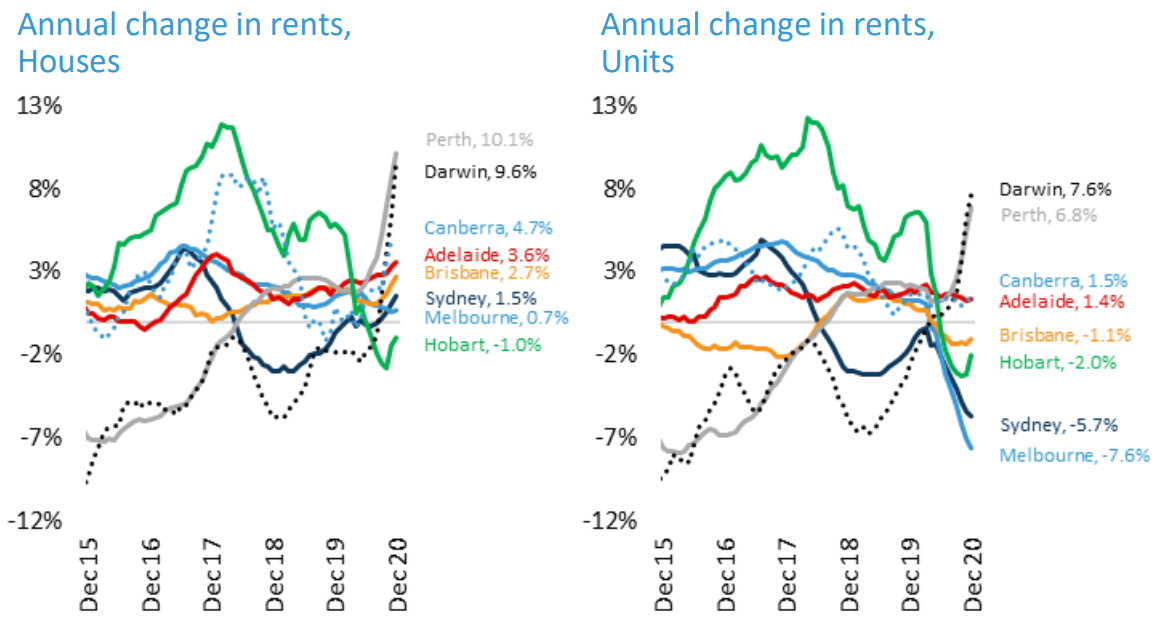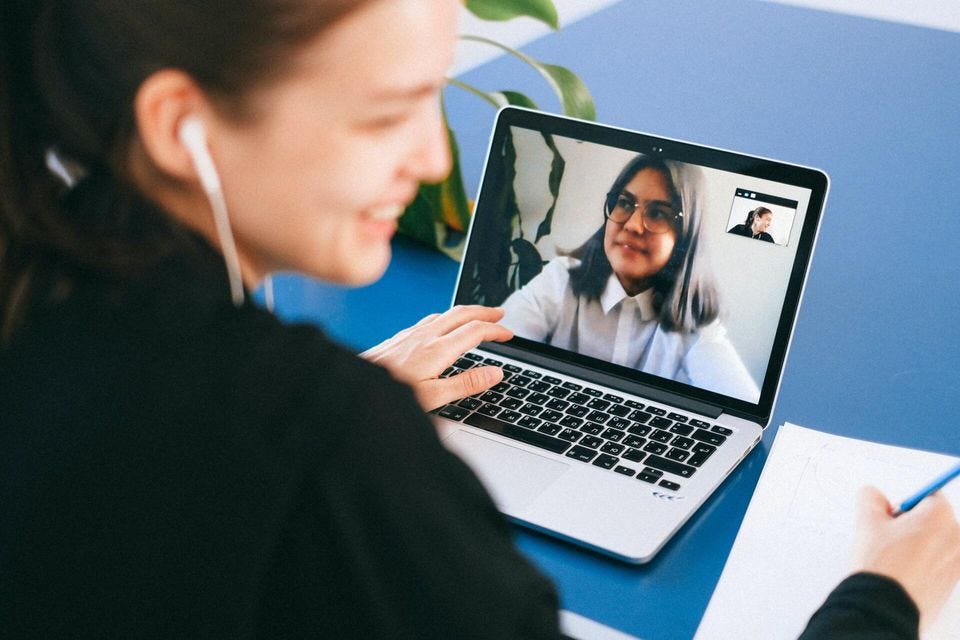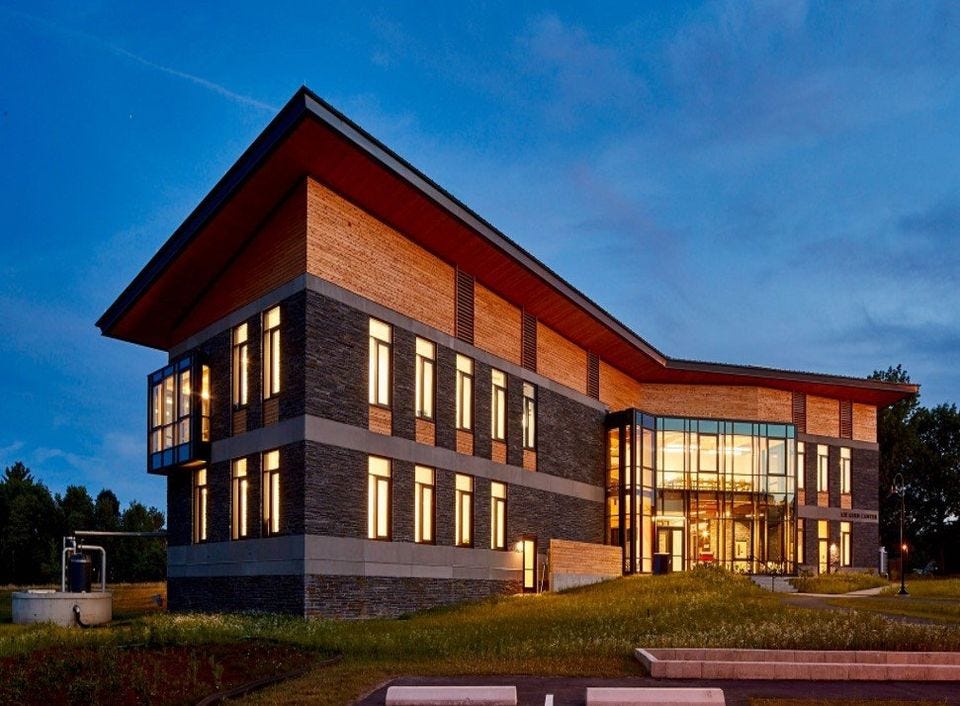New here
This issue was originally sent as email newsletter on 7th Jan 2021.We're proud to introduce you to Makao Notes.
A newsletter that shares the latest knowledge and stories in sustainability and the built environment. Our vision for Notes is to capture the most insightful content from various perspectives and expertise.
For the first couple of issues, we'll be diving deep into the widespread shift into remote working, living and learning in light of the current global pandemic.
Here we present Part 1: Remote Working.
In the next issue, we'll present Part 2: Remote Living and learning.
We hope you enjoy this 5 minute read.
THE STORY IN NUMBERS
THE STORY IN NUMBERS
415.55
As of 2nd Feb 2021—the concentration of Carbon Dioxide in the atmosphere was 415.55ppm. A year ago the concentration was 414.32ppm. The concentration limit of the UNFCCC Paris Agreement is 430ppm (for 1.5°C warming) and 450ppm (for 2°C).
5.1
Melbourne dethroned Sydney to become Australia's largest CBD in 2020. Research by JLL shows Melbourne's total office stock now sits at 5.1 million sqm. Edging out Sydney's 5.0 million sqm. Both cities are comparable in size to Berlin (4.5 million sqm), Barcelona (4.9 million sqm), and Madrid (6.5 million sqm).
40,000
'Despacito' broke a new digital record in 2018 when it crossed 5 billion views on YouTube. It also burned the same energy as 40,000 USA homes.
1.1
Humanity unlocked a new milestone in 2020—human-made mass may now outweigh living biomass on Earth. Airports, shopping malls, roads, houses, bricks, concrete, plastics, your favourite coffee mug—and all other artificial infrastructure—now weighs in at approx. 1.1 trillion metric tonnes. Equal to the combined dry weight of animals, plants and other living things.
THE BIG STORY
In March 2020, WHO declared COVID-19 a global pandemic. This was a Big Deal. Since then, the virus has caused unprecedented levels of universal disruption.
Global management consulting firm, McKinsey, argues that future generations will likely look at this period in terms of "pre-COVID" and "post-COVID" eras.
Perhaps the biggest disruption was the transition from the physical to virtual. Within a short span, many workers have made the abrupt shift to working from home.
This leaves the following questions:
How is remote working reshaping our built environment and industry?
How has society adapted to remote forms of living and learning?
Situational awareness
Over the past year, many have said we are all undergoing a grand experiment in "working from home".
The global shift to remote working will affect the way we work, live and thrive in the post-pandemic future.
Similarly, such hybrid ways of working has a profound impact on how we communicate, connect and create in the workplace.
With workers performing their jobs at home, the economic ecosystems around our central business districts and office towers are taking hit.
The resulting reduction of urban traffic has ripple effects throughout our built environment and the structure of labour markets.
Why it matters
The pandemic is having a dramatic impact on businesses around the globe and it will have an unprecedented effect on the built environment.
Remote working within the construction industry has highlighted the rise of telecommuting. Thus increasing the need for a more robust data infrastructure and demand for data centres.
The acceleration, adoption and adaption of new technology is one of the most impactful ways in which the built environment industry can be supported during Covid-19.
The pandemic has quickly forced firms to develop new internal policies and implement technology on a wider scale.
The built industry has never been renowned for efficiency.
However, the pandemic has accelerated the process of bringing building sites into the digital era: through various applications of Artificial Intelligience remote collaboration tools.
Zoom out
Now a newer migration trend is underway: e-change.
E-changers are people who move away from the large capital cities to nearby regional and coastal "lifestyle" towns, where they utilise broadband internet networks to work remotely.
Modelling by the Victoria's University's Centre of Policy Studies has attempted to predict the potential effects of working from home. Here are the two key effects on housing and jobs:
Workers commuting less often will be prepared to commute further, thereby changing the patterns of housing demand and labour supply. In particular, it will drive more urban sprawl and boost populations of communities within acceptable commuting distances.
While the population will spread out, many jobs are likely to go in the opposite direction, as many businesses will look to set up shop in central business districts.
The presence of "Zoom Towns"—places that have experienced a flood of remote workers from fleeing cities—brings considerable potential for economic and urban development.
Through adaption, remote working has the potential of transforming small-town life and reducing regional inequalities.
Yes, but
While some forms of remote work are likely to persist after the pandemic has passed, it will require many shifts. Including investment in digital infrastructure, freeing up office space and structural transformation of cities and real estate.
However, it does not necessarily mean the end of offices or city centres. Rethinking the "office" provides us with a wealth of opportunity to consider how we want our cities to look and how they can become more inclusive, safer and greener.
Looking ahead
It's time to start factoring the current trend of remote work into our urban planning processes. Integrating telecommuting factors into how we offset our most pressing urban woes and help build a sustainable future for cities and urban environments.
Morning commutes are turning from a drive to the office to a walk from bed to a desk. Running the building central AC is turning into the use of a thousand personal lighting, appliance and electronic home offices.
Scope 2 Guidance—how corporations measure emissions from electricity, heating & cooling—will have to be adapted across sectors. Therefore, corporate environmental footprints and sustainability strategies will need to be reshaped and rethought.
The various hybrid forms of remote work may be a solution in saving cities from crowded and over-populated urban hubs. Now that talented people can work from anywhere.
The broader effects result in a lower cost of living, preservation of natural resources and improvement in both, urban and regional infrastructure.
Remote work may be one of the keys to a sustainable future.
CHART OF THE WEEK
Right now the Residential Vacancy rates in Melbourne sit at about 4% (up from 1.9% in March 2020).
A similar trend can be seen in Sydney as per investment research firm SQM Research.

WHAT ELSE?
️📽️ A video blast from the past where Arthur C. Clarke predicts the remote work arrangement in 1964. From BBC Horizon.
🚘 Here's a refreshing read from Transurban. Aside from the impressive graphics it's interesting to see how they use alternative data sources like the Apple and TomTom to explore mobility trends.
🏗️ Explore City Melbourne's development activity online.
DEAL CIRCLE
Property
New suburb in Pakenham East featuring 7,200 homes, a town centre, bike trails, 3 schools, future railway station, and local parks and reserves equivalent to about 22 MCGs
In case you missed it, here are the 100 New Schools the Victorian government has in the pipeline (2019-2026)
Gurner's $1bn project in Fisherman's Bend got the green light as one of the shovel ready projects
Charter Hall consortium buys $510million David Jones flagship store from South African Woolworths
Renewable Energy
SunCable's $22billion dollar solar farm to be built in NT. While some of the 3GW energy produced will be used in Darwin, most of it will be exported to Singapore and eventually Indonesia.
France's Neoen invests $500million in a southern Queensland solar farm and will partner with Tesla to build Australia's biggest battery near Geelong.
Infrastructure
The Ballarat Station Southside Masterplan is underway
BUILDING OF THE WEEK
Completed in 2016, the R.W. Kern Center (Hampshire College, Amherst, Massachusetts USA) achieved Living Building Challenge certification in 2018.
Designed by American Architects Bruner/Cott Architects
Net zero energy, water, waste and emission
The building produces more energy than it consumes, handles its own waste and was largely constructed using local timber and stone (sourced within 50km of the site)
To provide the healthiest possible working and learning environment, all building materials selected and used were Red List compliant
It's the largest Living Certified higher education project in the world
COMMUNITY CORNER
Let's talk. We'd love to hear from you.
What are your predictions for the Australian real estate industry in 2021?
Where do you see the future of "Working From Home"? What do you like or dislike about working remotely?
Hit reply with thoughts, feedback, stories, or tips.




